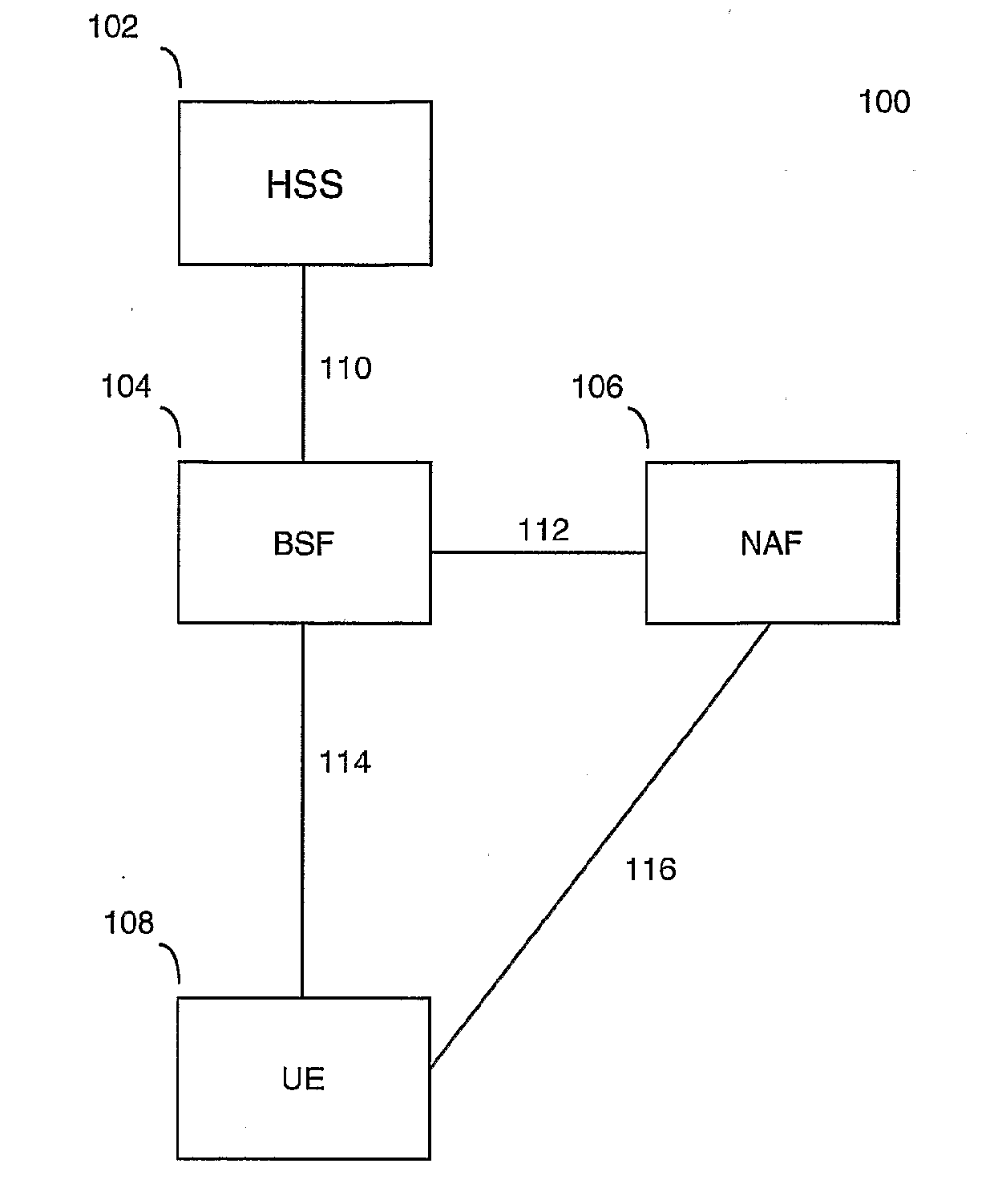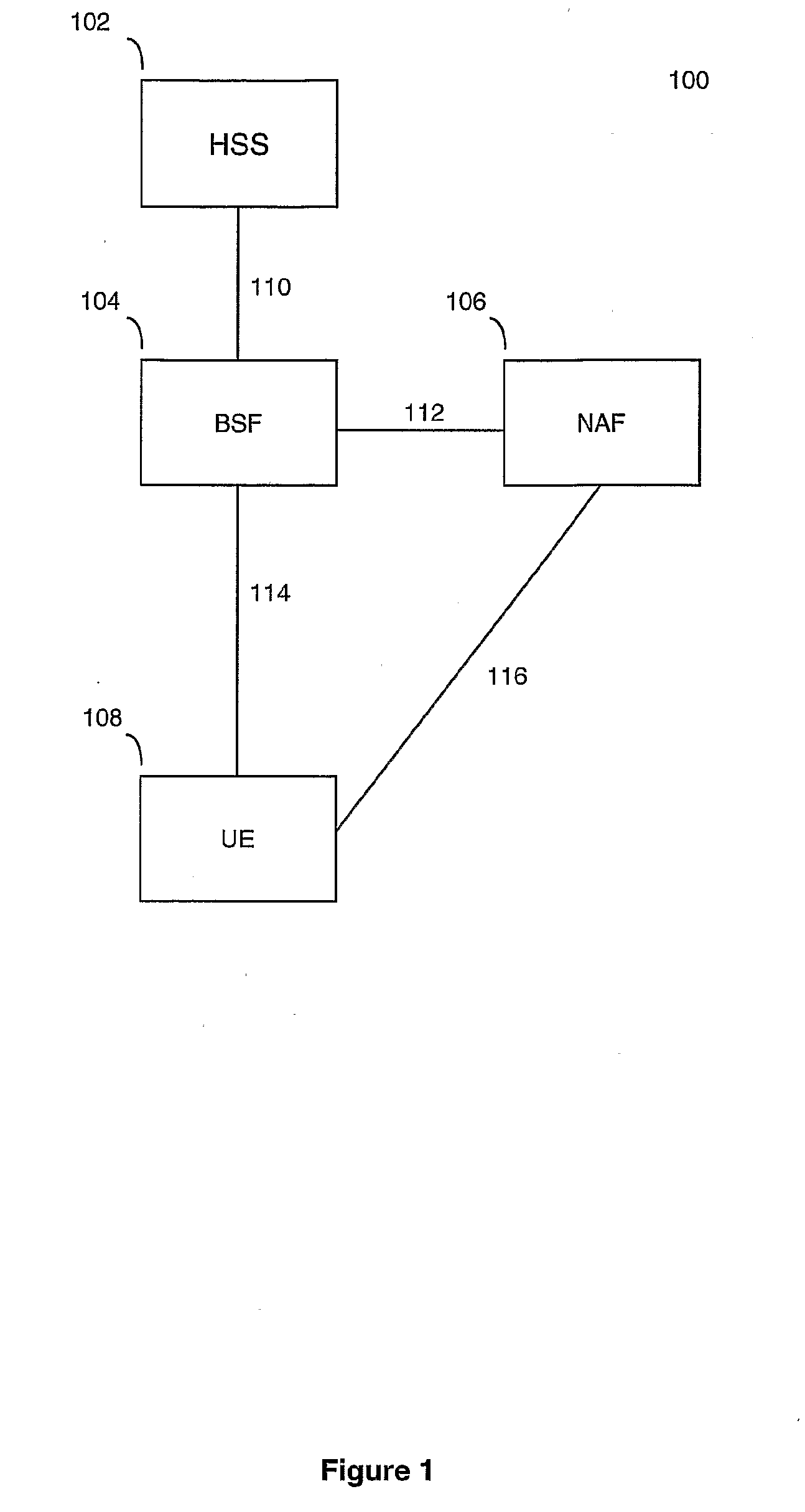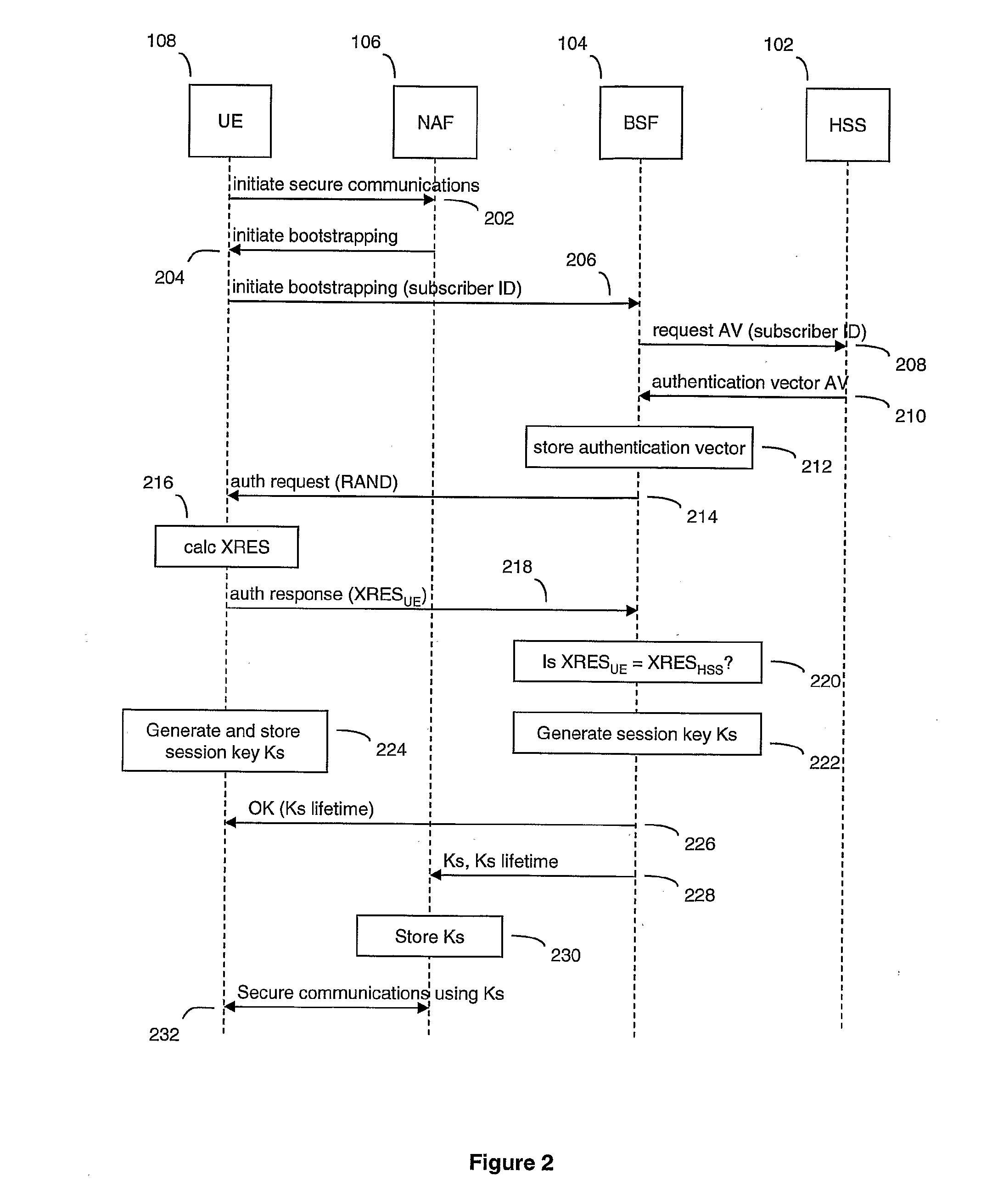Recursive authentication
- Summary
- Abstract
- Description
- Claims
- Application Information
AI Technical Summary
Benefits of technology
Problems solved by technology
Method used
Image
Examples
Embodiment Construction
[0040]The present invention is described herein with reference to particular examples. The invention is not, however, limited to such examples.
[0041]FIG. 1 illustrates a simple 3G network 100 employing bootstrapping. The network 100 comprises a HSS (home subscriber server) 102, a BSF (bootstrapping server function) 104, a NAF (network application function) 106 and a UE (user equipment) 108. In the network 100, the BSF 104 and the UE 108 mutually authenticate each other using the AKA protocol. Session keys are agreed and are applied to communications between the UE 108 and the NAF 106. The NAF 106 may be a service provider, providing services such as secure mail, electronic commerce and payment, access to a corporate network and such like. The UE 108 may be any suitably configured device such as a mobile phone, a PDA or a laptop. The UE 108 contains a USIM (user subscriber identity module) which securely holds information relating to the user, such as the subscriber identity and auth...
PUM
 Login to View More
Login to View More Abstract
Description
Claims
Application Information
 Login to View More
Login to View More - R&D
- Intellectual Property
- Life Sciences
- Materials
- Tech Scout
- Unparalleled Data Quality
- Higher Quality Content
- 60% Fewer Hallucinations
Browse by: Latest US Patents, China's latest patents, Technical Efficacy Thesaurus, Application Domain, Technology Topic, Popular Technical Reports.
© 2025 PatSnap. All rights reserved.Legal|Privacy policy|Modern Slavery Act Transparency Statement|Sitemap|About US| Contact US: help@patsnap.com



